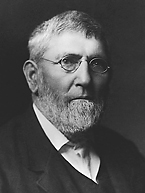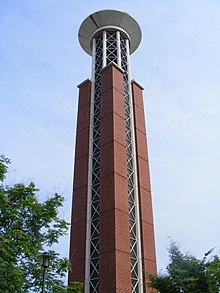History
Lipscomb University was founded in 1891 by David Lipscomb and James A. Harding. The campus grounds consist predominantly of the former estate of David Lipscomb, who donated it to the school. In the early 20th century, the institution was a Bible college. Its original name was the Nashville Bible School, which was changed toDavid Lipscomb College, then to David Lipscomb University. Lipscomb graduated its first senior class in 1948, leaving behind the name of "junior college" forever. In 1954, the Southern Association of Colleges and Schools granted Lipscomb its first accreditation. In 1988, Lipscomb attained Level III (master's degree-granting) status and became known as David Lipscomb University. In 2005, the "David" was legally dropped, and the institution was renamed simply Lipscomb University.
At the school's inception, all full-time students were required to take daily Bible classes and to attend daily chapel services;[citation needed] however, students are currently required to attend Bible classes three times a week and chapel twice a week. (Half of these chapels are now held in the sports facility Allen Arena, and half are "break-out" sessions that are held in multiple places at once.) The school was never intended to function primarily as a seminary, a term looked upon with disfavor by many members of the Churches of Christ, but rather as a Christian liberal arts institution. However, several prominent Church of Christ religious ministers received at least a portion of their higher education there (see "Notable alumni" below), and the institution remains thoroughly ensconced in the Churches of Christ: Potential faculty must prove their membership in a Church of Christ before being hired, and most of the student body comes from a Church of Christ family, background, or high school.[citation needed]
David Lipscomb was a pacifist who was highly skeptical about government, and although many people associated with Lipscomb University maintain this skepticism, most do not agree with Lipscomb's belief that Christians should not vote.[citation needed]
In addition to the university campus, there is also an on-campus high school and middle school; the associatedelementary school moved to a renovated former public school a few blocks away in 1986. All three comprise the David Lipscomb Campus School.
[edit]Presidents
There have been 13 superintendents or presidents of Lipscomb over 17 administrations.
- 2005–Present Dr. L. Randolph Lowry III
- 1997-2005 Dr. Steve Flatt
- 1987-1997 Dr. Harold Hazelip
- 1977-1986 G. Willard Collins
- 1946-1977 Dr. Athens Clay Pullias
- 1943-1946 Dr. Batsell Baxter
- 1934-1943 E. H. Ijams
- 1932-1934 Dr. Batsell Baxter
- 1923-1932 H. Leo Boles
- 1921-1923 H. S. Lipscomb
- 1920-1921 A. B. Lipscomb
- 1913-1920 H. Leo Boles
- 1913 J. S. Ward
- 1906-1913 E. A. Elam
- 1905-1906 J. S. Ward
- 1901-1905 William Anderson
- 1891-1901 James A. Harding
The Nashville Bible School was co-founded by David Lipscomb and James A. Harding in 1891. David Lipscomb never served as president, but as chairman of the board of trustees. James A. Harding served as the school's first superintendent.
[edit]Academics
U.S. News & World Report ranks Lipscomb University 18th among Regional Universities (South)[3] according to the U.S. News and World Report's "2011 America's Best Colleges" guidebook. Lipscomb's liberal arts curriculum includes a wide range of academic programs in the arts and sciences. Many students also enroll in pre-professional programs and go on to graduate school, with most students matriculating as majors in education, biblical studies, and business. The curriculum continues to evolve, notably with the addition of computer science in the Raymond B. Jones College of Engineering and the doctorate in pharmacy in the College of Pharmacy.
The university has also increased its number of graduate programs, offering 15 degree programs. This is up from three degree programs only a few years ago. The university has also obtained a Level V status with the Southern Association of Colleges and Schools when it began seeking accreditation for the doctorate in pharmacy, allowing Lipscomb to expand its graduate offerings.
[edit]Colleges and Institutes
Lipscomb University comprises the following Colleges and Institutes:
| Colleges: | Institutes: |
[edit]Campus Information
The center of the university, known as Bison Square, is located between the Bennett Campus Center and the Willard Collins Alumni Auditorium. The south side of the Bennett Campus Center was converted from a single upstairs and downstairs entry into an amphitheater-style seating area and entryway, as well as having an entirely renovated interior with redesigned seating and lighting that create a more welcoming atmosphere. A full-service Starbucks store has also opened inside the campus center, complete with its own separate entry on both the interior and exterior of the building. The bricked square is traditionally used during warm weather as the location for devotionals, concerts, and other campus activities.
Willard Collins Alumni Auditorium has been completely renovated with new seating, flooring, and audio/video equipment, updating its look from the original design. Attached to Alumni Auditorium is the A. M. Burton Health Sciences Center. The Burton building was heavily renovated to house the new College of Pharmacy. The entire renovation of the building received LEED Gold certification. On the southeast corner of Burton, a new music wing, the McMeen Music Center, with a large rehearsal room for music ensembles on the main level, with new music offices and practice rooms on the lower level.
To the south side of Burton is the Swang Business Center where business and English classes are held.
The university's newest academic building, the Hughes center, opened in Fall 2010 with space for both engineering and fine arts. The Ezell Center comprises the religious, education, mass communication, social work, history, political science, and philosophy departments. Other academic buildings include the McFarland Hall of Sciences where the science and math classes are held, and the recently renovated Ward Hall with renovations similar to those in Alumni Auditorium.
Beaman Library was constructed in time for the university's centennial in 1991. The university's old library, the Crisman building, now serves as the university's administrative building.
Allen Arena, a 5,028-seat multipurpose facility, opened in October 2001 on the site of the old McQuiddy Gymnasium. Part of the McQuiddy Gymnasium still remains between Allen Arena and the Student Activities Center (the SAC), a multipurpose student activity space with workout facilities, basketball courts and an indoor track. The SAC offers a variety of workout classes to students, including spin classes on exercise bikes. Yearwood Hall, a women's dormitory, was torn down for construction of Allen Arena and its accompanying parking garage.
The university has six residence halls. Women's residences include Elam Hall, Fanning Hall, and Johnson Hall, all of which have a large enclosed courtyard. Men's residences include Sewell Hall, which was renovated in the late 1990s, and the eight-story High Rise, the university's tallest structure. The final residence on campus is The Village, a co-ed, apartment style housing for upperclassmen. Men and women are not allowed in dorms belonging to the opposite sex, with a few exceptions: 1) members of both sexes can enter the lobby during certain hours, 2) during moving days, and 3) on "open dorm" occasions; 4) and men are also allowed into the central courtyard of the women's dormitories only when cookouts or other such mixers are being held.
[edit]Tax Exempt Bonds
Some academic buildings were built with tax-exempt municipal bonds, and, because Lipscomb is a Christian school, this led to an extended lawsuit on the basis of whether or not a private religious institutions is allowed to use public bonds. This case was debated for many years and ultimately made it to the Supreme Court.[4]
The court upheld the decision of the lower court, that, plainly stated, the government could not withhold public bonds based on Lipscomb's religious affiliation. However, one of the stipulations for receiving public funding was that these buildings cannot have religious classes taught in them. For example, no Bible classes are taught in the McFarland Hall of Sciences; however, the rule about excluding Bible classes does not apply to Ward Hall, even though it is attached to McFarland Hall. Construction of Ward was funded through private donations. This decision has allowed other private, religious universities to pursue public funding for capital projects.





















